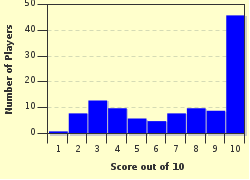Quiz Answer Key and Fun Facts
1. In the fall of 1931, when Thalia Massie made an accusation that shook Hawaii, she was just twenty years old and recently come to the islands. Which of these best describes her role in Honolulu society?
2. In the wee hours of September 13, 1931, after she had become separated from her husband at a party, Thalia Massie made a startling accusation to the police. She had been attacked, she said, by half a dozen native Hawaiian men. How did she say she had encountered her assailants?
3. By the next day, Honolulu police had arrested five men in connection with the attack on Thalia Massie: Ben Ahakuelo, Henry Chang, Horace Ida, Joseph Kahahawai, and David Takai. How did these men come to the attention of the police?
4. Confident they had the right suspects for the attack on Thalia Massie, Honolulu police and prosecutors prepared to go to trial. Yet their case suffered from a number of problems. Which of the following was NOT one of the flaws in the police investigation?
5. Just under three months after Thalia Massie reported an attack to the police, the case went to the jury. What was the outcome of the rape trial of Ahakuelo, Chang, Ida, Kahahawai, and Takai?
6. Furious at the outcome of the rape trial, four of Thalia Massie's supporters decided to take the law into their own hands. They kidnapped one of the defendants -- Joseph Kahahawai, age 22 --, shot him dead, and were arrested while trying to dispose of the body. Who were these four "honor killers," who boasted of their role in a lynching?
7. The conspirators who kidnapped and murdered Joe Kahahawai took him in broad daylight, right in front of the judiciary building. What ruse did they use to lure the victim into their rented car?
8. Having murdered Joseph Kahahawai, the four conspirators found themselves in trouble. Although they were proud of their vigilante action, the law took a much dimmer view of it. They appealed to wealthy friends to help them hire the country's best-known defense attorney, a man who had become famous defending clients like Ossian Sweet and John Scopes. Who agreed to take on their defense?
9. Arguments in the murder trial finished on April 27, 1932, and the country waited anxiously for the verdict. After two long days of deliberation, the jury returned: all four defendants were guilty of manslaughter in the death of Joseph Kahahawai. How were they punished?
10. When the trials were over and the mainland reporters had all gone home, questions still remained. The Honolulu prosecuting attorney, John Kelley, wanted to settle once and for all what had happened to Thalia Massie. What famous detective agency did he hire to re-do the police investigation?
Source: Author
CellarDoor
This quiz was reviewed by FunTrivia editor
DakotaNorth before going online.
Any errors found in FunTrivia content are routinely corrected through our feedback system.

